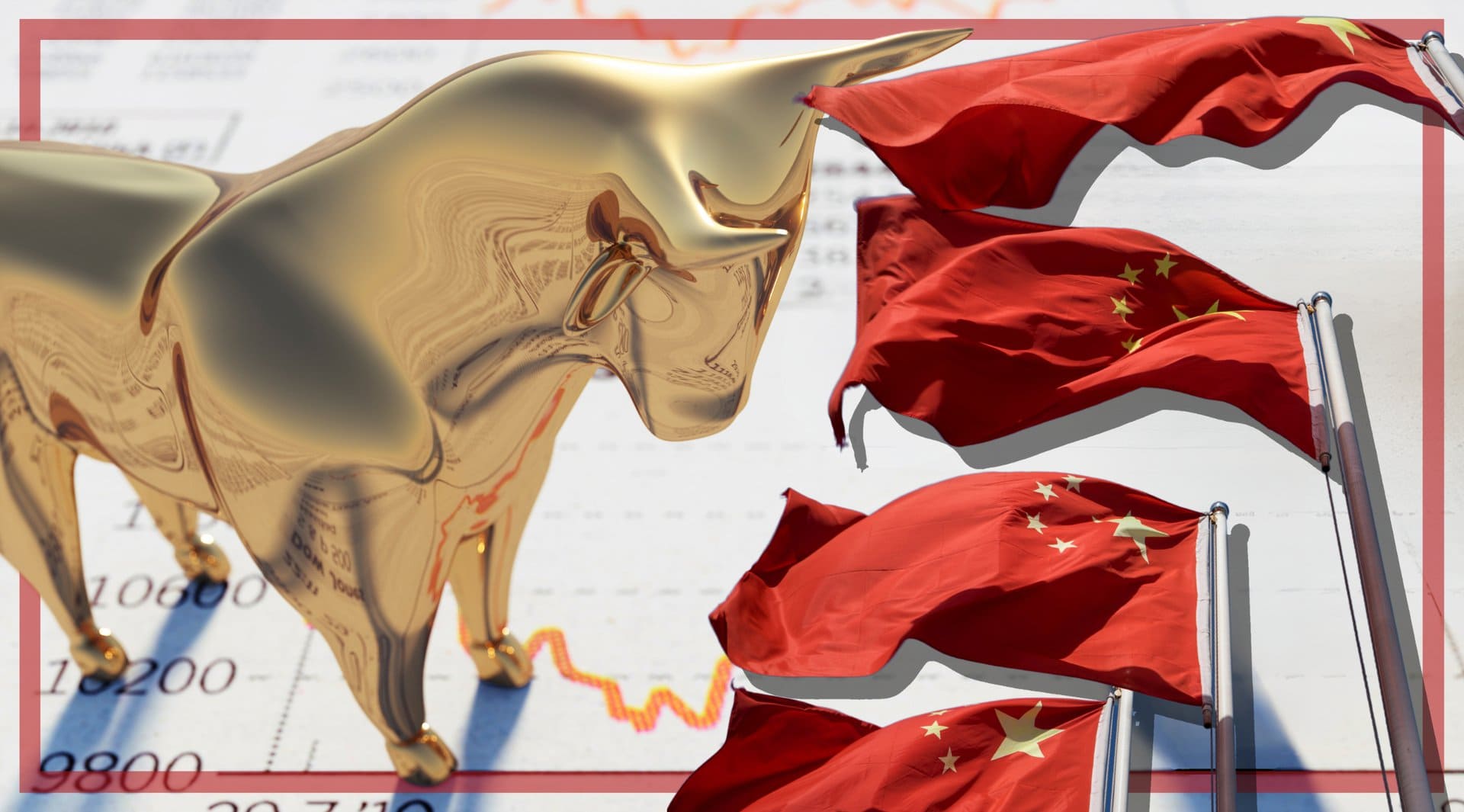The fashionable trend in financial markets at the moment is to be bearish on China. Global investment banks, such as Goldman Sachs, have released reports suggesting that the East Asian country could be facing “Japanification,” similar economic challenges that plagued its neighbour after a period of strong growth in the latter part of the last century.
Relatively weak rates of growth, low rates of inflation (or even deflation), rock bottom interest rates, high levels of public and private debt, and the spectre of demographic decline are all reasons cited for reducing or eliminating exposure to China.
That’s not to mention contemporary issues in Chinese markets, such as the ongoing troubles in the real estate sector and worsening geopolitical tensions. Japan’s Nikkei Index has recently soared to all-time highs, partly because it’s now seen as a strong alternative for banks and funds wishing to retain their exposure to Asia without having assets in China.
In the space of 72 hours, BlackRock’s Jon Gray, Blackstone’s Stephen Schwarzman, Citadel’s Ken Griffin, and Guggenheim Partners’ Mark Walter all landed in Tokyo. Economic malaise in #China is causing financiers to consider shifting assets to #Japan.https://t.co/77HZyWcvXq
— #DisruptionBanking (@DisruptionBank) August 18, 2023
With foreign investors moving to relocate capital, Chinese markets have indeed been on the slide for several months. Since peaking in 2021, more than $6 trillion in value has been wiped from stock markets in China and Hong Kong. Earlier this week, China’s benchmark CSI 300 Index dropped to a five-year low. The Hang Seng is down over 5% since the start of the year alone, and almost 30% over the last twelve months.
But is there a chance that all the talk of Chinese decline is overblown? Andrew Lapping, Chief Investment Officer at Randmore Fund Management, told Disruption Banking that “we see the sharp decline in the Chinese market as an opportunity.”
“As an investor, it is important to take advantage of opportunities when they arise, this is often difficult as the crowd is usually moving in the opposite direction. For sure, there are risks in China, but then there are risks everywhere, and it depends on what is in the price,” he added.
“Over the past year, the S&P500 is up over 20% while the Hang Seng is down 30%. There is no way the underlying business values have diverged to this degree. This underperformance, particularly over the past month, has given us the opportunity to buy high quality, well-capitalised businesses at very low prices – an exciting opportunity.”
JPMorgan Asset Management is adding more Chinese stocks to its portfolio https://t.co/JQIafsJlit
— Bloomberg (@business) June 7, 2023
Perhaps one of the reasons for the bearishness on China is that investors continue to view the country and its economic troubles in the same way they would for a laissez-faire, free market economy. Take the real estate crisis and Evergrande’s default. With China’s second largest property developer defaulting on its debt obligations, and a third of Chinese property companies feared to be heading towards bankruptcy, many market participants are keen to point out the similarities with the 2008 financial crisis, which was largely sparked by the selling of subprime mortgages and the rising number of borrowers that were unable to service their loans.
As the economist Philip Pilkington has pointed out, the critical difference between these two cases is that investment in China is controlled by the state. In the late 1990s, during the Asian Financial Crisis, Chinese banks were overburdened with debt that could never be paid back. In 2003, non-performing loans (NPLs) made up more than a third of Chinese GDP.
A 2008-style crisis was averted, however, through the establishment of Asset Management Companies (AMCs). These entities were backed by central bank and took the bad loans off the banks’ balance sheet. Given the central bank has the power to print the cash to support these AMCs, they essentially became a tool to relieve banks of their loans. In turn, banks and other companies were able to return quickly to loaning money out and encouraging spending and consumption. This is how China was able to avoid the kind of stagnation and recession that plagued Europe and the US.
China's bad loan asset management companies (AMCs) are helping struggling firms roll over debt https://t.co/UUUhNx6vpE pic.twitter.com/kFqd4NuNVe
— Chris Powers (chrispowers.eth) (@powers_chris) January 7, 2017
Of course, there are several risks associated with AMCs, whose debt-to-equity ratios are already at sky-high levels. In theory, should the People’s Bank of China continue to print cash to support AMCs that could fuel inflation, although Beijing is currently battling the opposite problem of declining prices. There is also the wider issue of how AMCs encourage very poor market discipline.
With all that said, there is not yet any reason to suggest this will be the case. History suggests that the Chinese government, with its heavy oversight of the economy and its ability to direct investment and stimulate spending, will be able to find a way through this.
Besides, despite market sentiment, the current data is not even particularly bad from China’s perspective. The International Monetary Fund (IMF) recently predicted that China will grow by 4.6% this year. Compare that to the 0.6% the IMF forecast for the UK, and 1.3% in Germany and France.
Chinese stocks could well prove to be undervalued. Over the last twenty years, there have only been five occasions when Chinese stocks have been as cheap as they currently are compared to government bonds. On those five occasions, stocks then rallied by an average of 57% over the subsequent twelve months. Could AMCs help China avert another financial crisis and set their markets on a bull run?
Author: Harry Clynch
The editorial team at #DisruptionBanking has taken all precautions to ensure that no persons or organisations have been adversely affected or offered any sort of financial advice in this article. This article is most definitely not financial advice.















